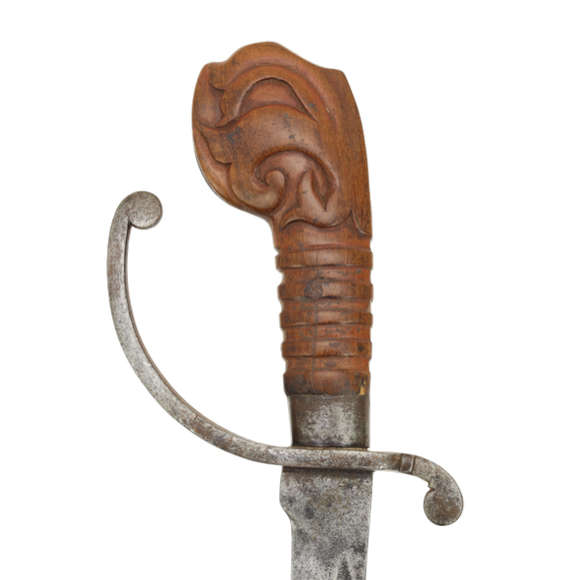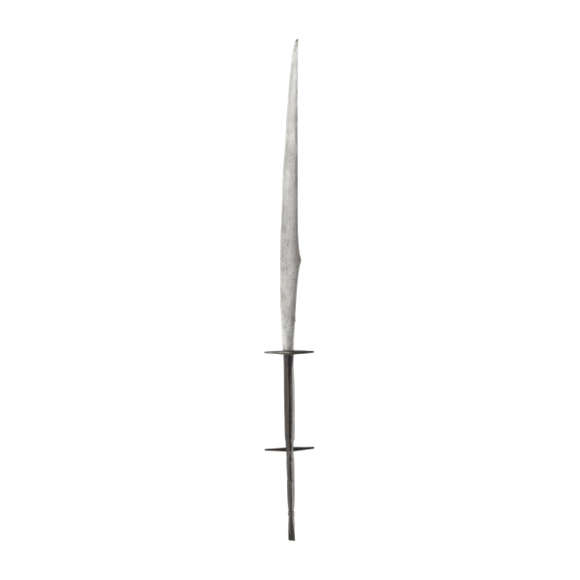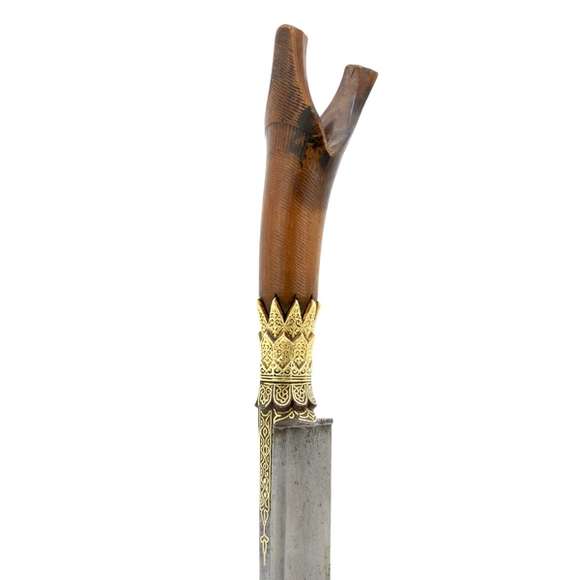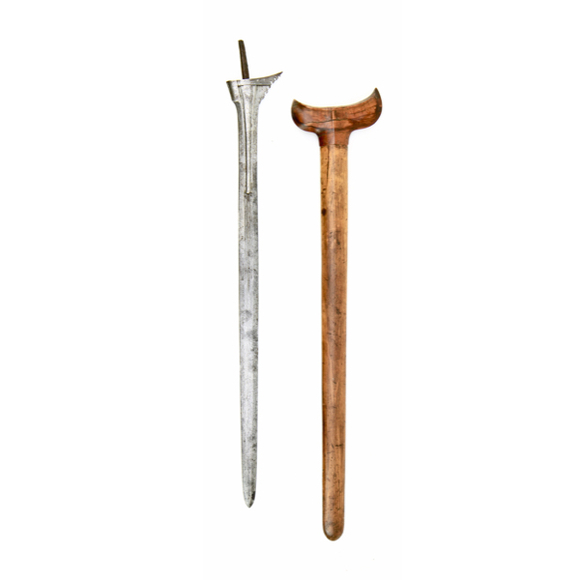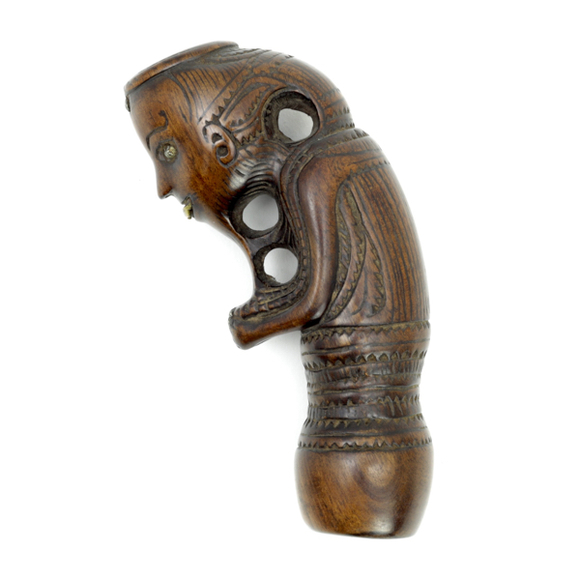Using a possibly captured M1898 "klewang" blade.

76.8 cm / 30.2 inch
65.2 cm / 25.7 inch
base 8 mm
middle 4.5 mm
near tip 2 mm
forte 36 mm
middle 32.5 mm
near tip 28.5 mm
825 grams
Pagaruyung, Sumatra, Indonesia.
Iron, steel, silver, wood.
18th or 19th century.
Description
An impressive Indonesian saber that was clearly inspired by European examples introduced by the colonists. It is completely mounted in thick silver. The hilt with a very well articulated lion head pommel and crossguard with D-shaped knucklebow. The spiraled work on the grip shows decor in rows of Chinese coins. At the blade side of the handle are three silver marks.
The wooden scabbard is entirely covered with silver sheet. The scabbard's end has a rib like those of European sabers, and at the top is a stopper to prevent it from slipping through the belt, again inspired by European saber designs. The decoration with floral and geometric decoration in repoussé is done in purely Indonesian fashion. In the center of the scabbard is an inscription that reads: "Raja Pagaruyung". (راجا فاغرويغ) It probably refers to the local ruler of Pagaruyung, a Minangkabau state in Sumatra.
The blade is a fully functional, heavy fighting blade with double grooves and a slightly raised backedge. It has remains of old etchings or engravings including a blazing star and what seems to be a coiling creature. Although the style of the blade is very European in appearance, the blade exhibits a clear pattern or "pamor" throughout. It is in slight relief and with highly contrasting layers, indicative of local manufacture.
Dating and attribution
The overall workmanship of the saber reminds of that of the pedang lurus, a short straight sword that seems to be inspired by European hunting swords. These also typically come entirely silver clad, often with a scabbard and handle that exhibit strong Western influence yet their decoration and manufacture points to local Javanese or Sumatran origin.1Such weapons come with either imported or locally made blades. Some bear inscriptions with a date and / or name, or the V.O.C. logo and were probably gifts that were locally commissioned to be exchanged between local rulers and the V.O.C. or later the Dutch colonial government.2 Most of these date from the 18th to the early 19th century and I believe this saber belongs to this group. It was probably locally commissioned by either the Dutch or a local Indonesian ruler for presentation to the ruler of Pagaruyung.

Marking on the scabbard.


A pedang lurus in my personal collection.
Some of these come with cut down Solingen blades, but my blade is also locally made.
Marked VOC 1763. Hoorn Chapter monogram.
Conclusion
An impressive Indonesian saber with European design features. This saber belongs to a group of silver clad weapons that were made in Java and Sumatra, that I believe were intended to be exchanged as gifts to local rulers and Dutch officials. It represents a fascinating piece of colonial history that is well worth further study.
Notes
1. Raffles notes that there was a tradition of fine silverwork on both Java and Sumatra: "Gold and silver, as is well known, are wrought by the natives of the Eastern Islands into exquisite ornaments; and the Javans are by no means behind their neighbours, the Sumatrans, in the knowledge of this manufacture."Sir Thomas Stamford Raffles, The History of Java, John Murray, London, 1817. Page 232.
2. A very fine Pedang Lurus dated 1792 was sold by Michael Backman. The article he wrote is well-worth consulting on the matter: Magnificent Chased & Repoussed Silver Sword & Scabbard (Pedang Lurus), Central Java, Indonesia, dated 1792.



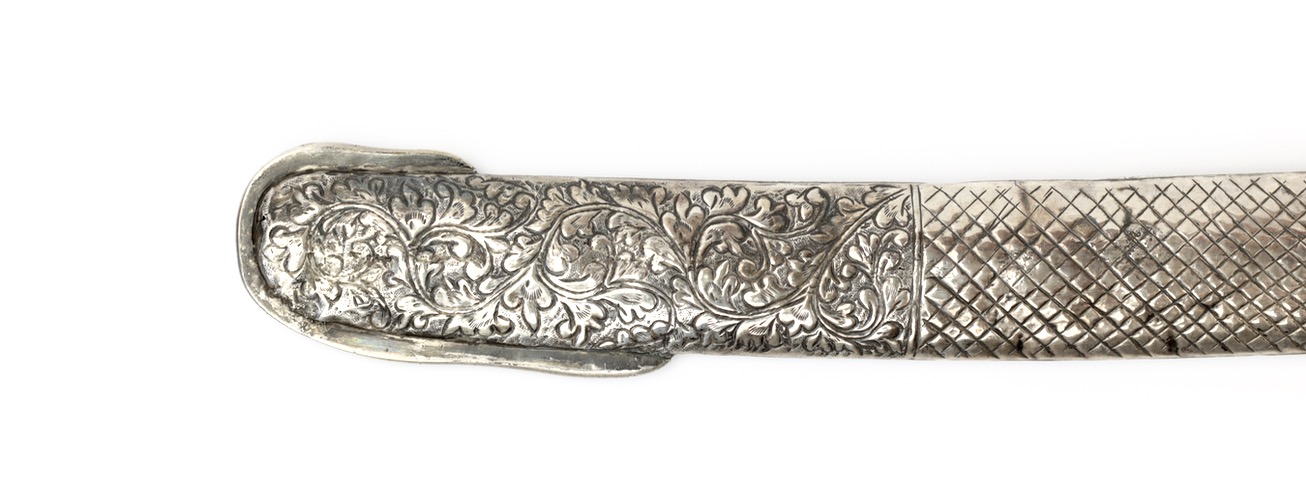





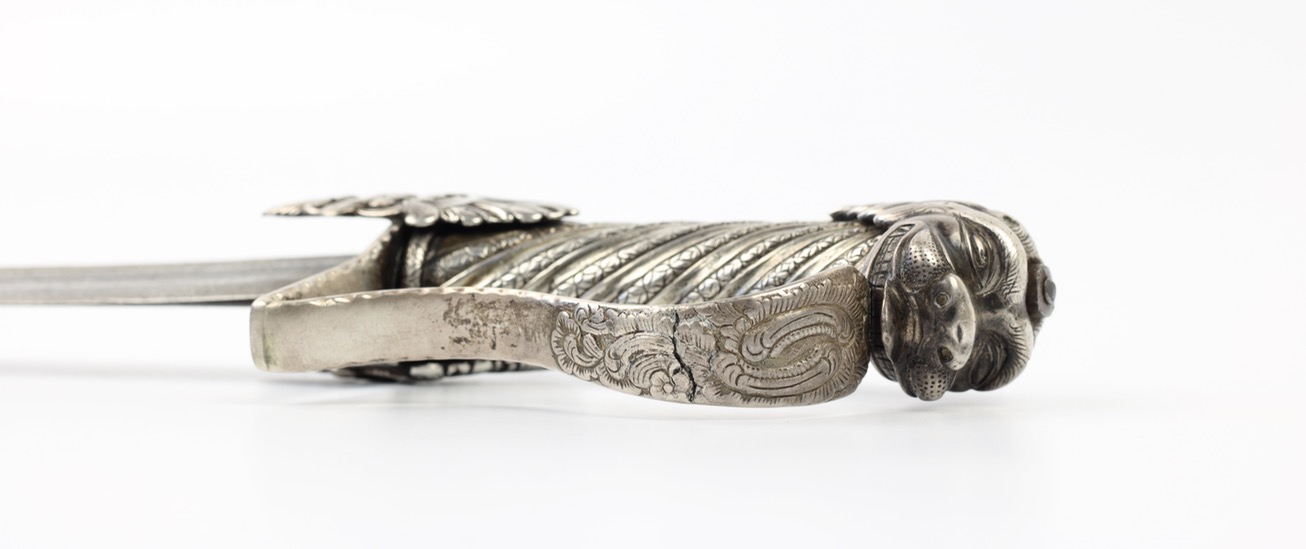
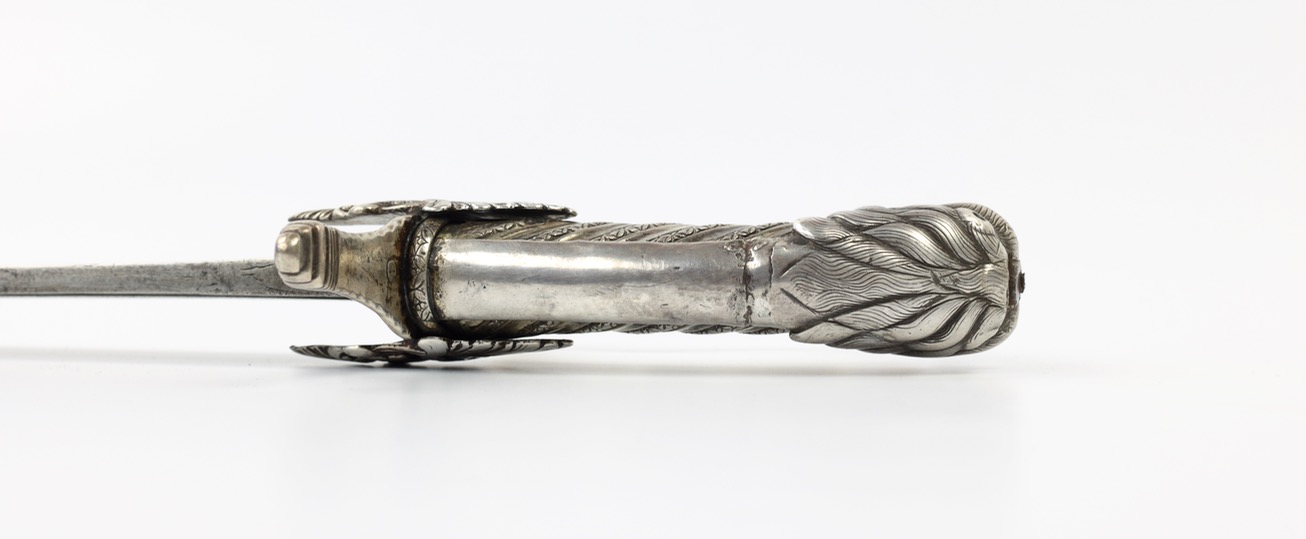

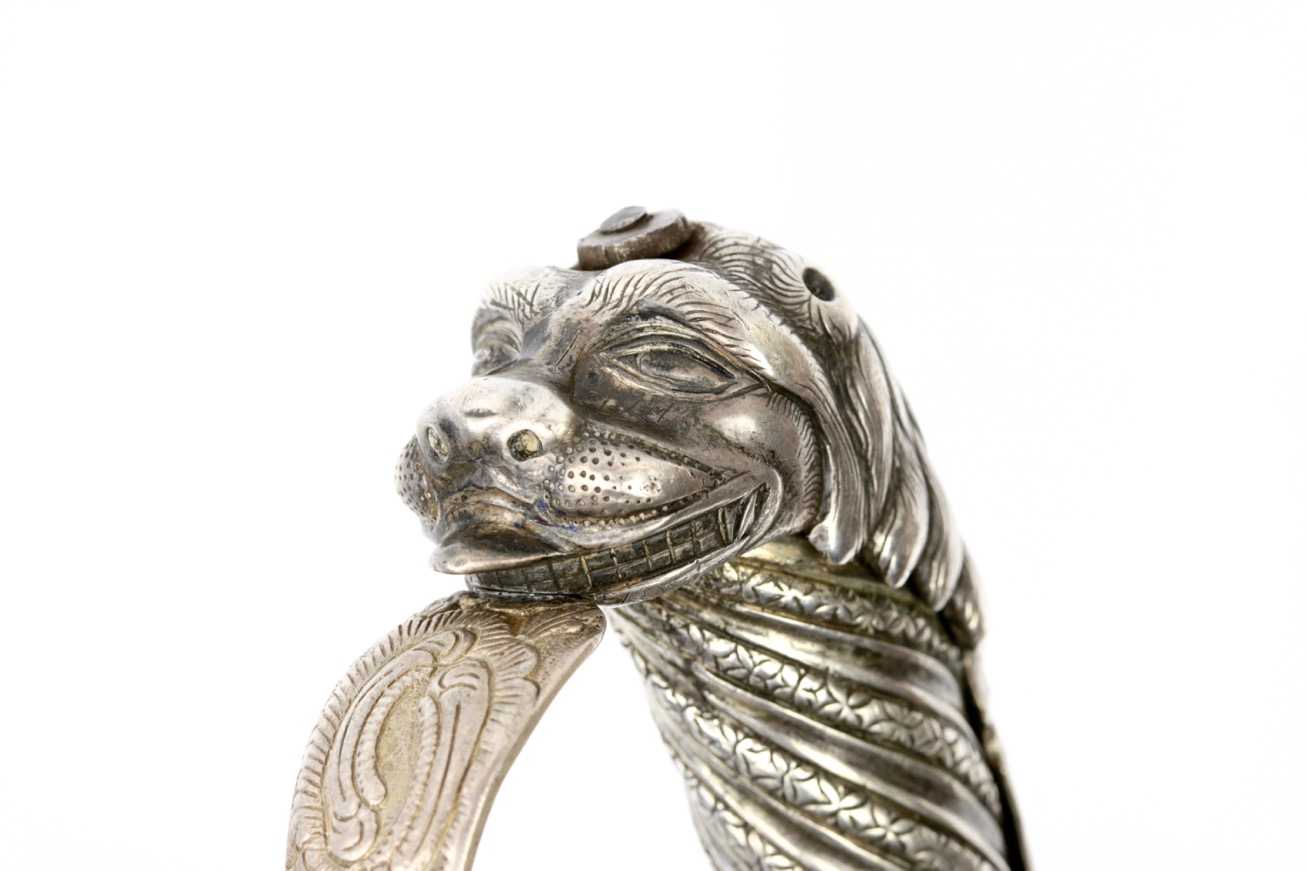

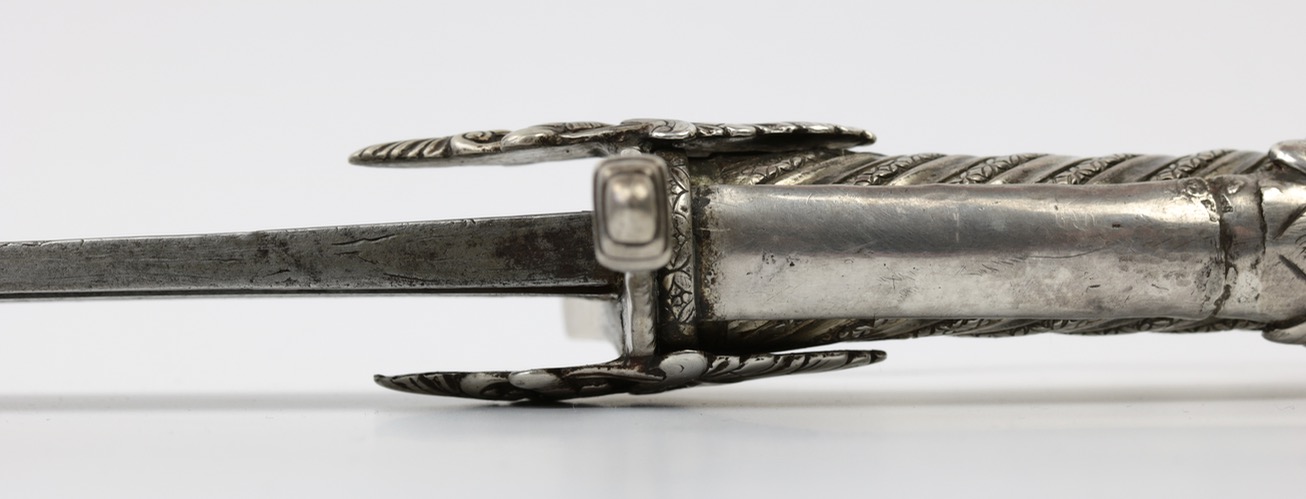




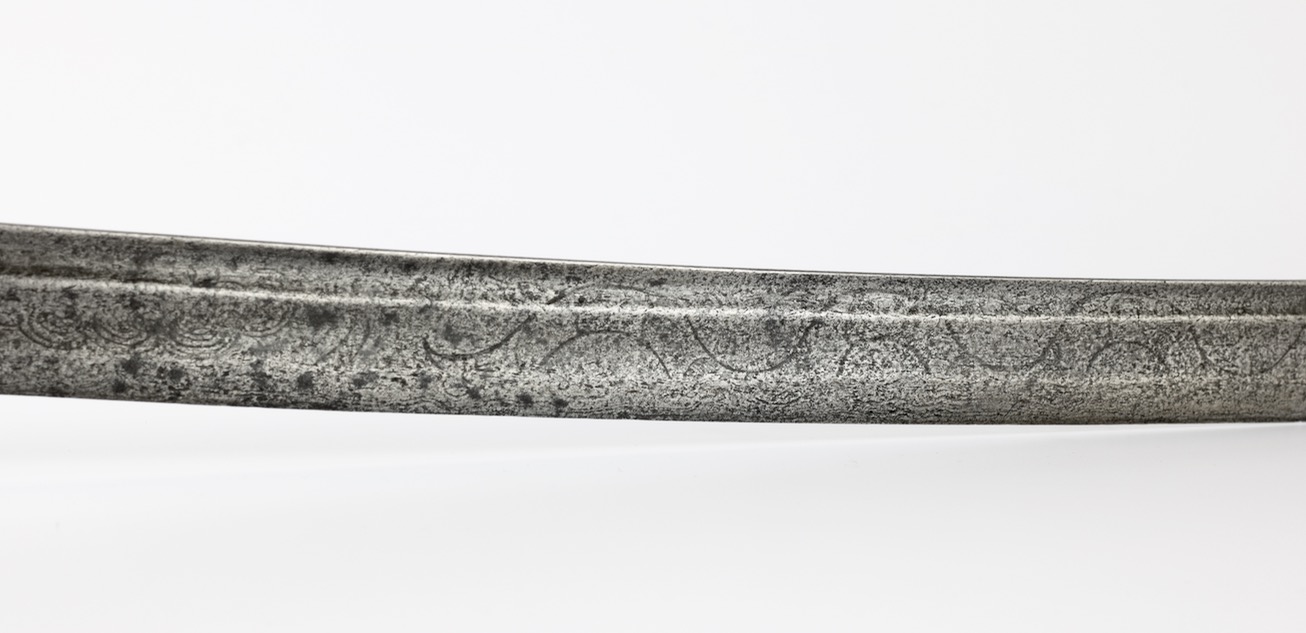


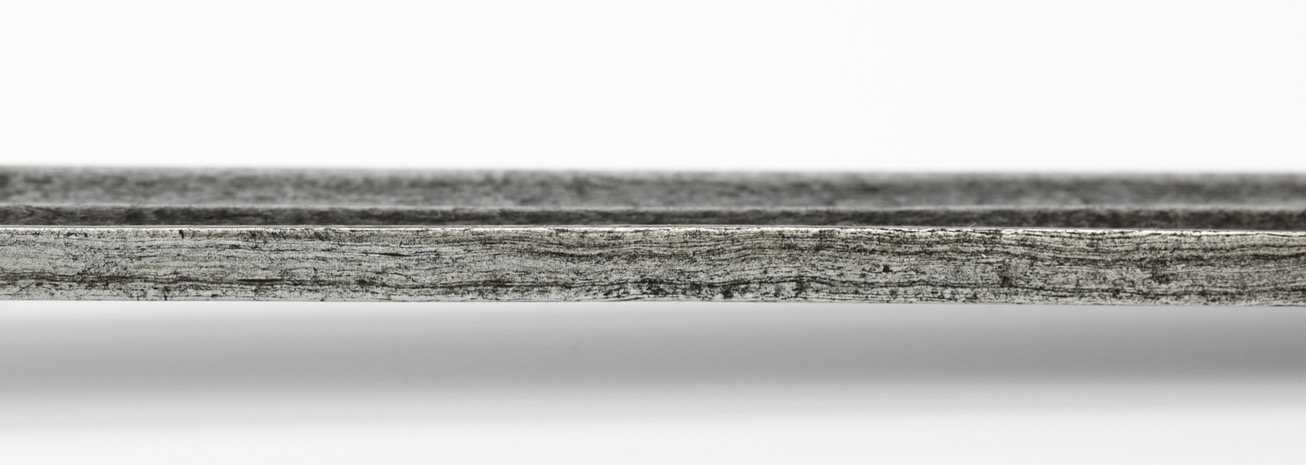


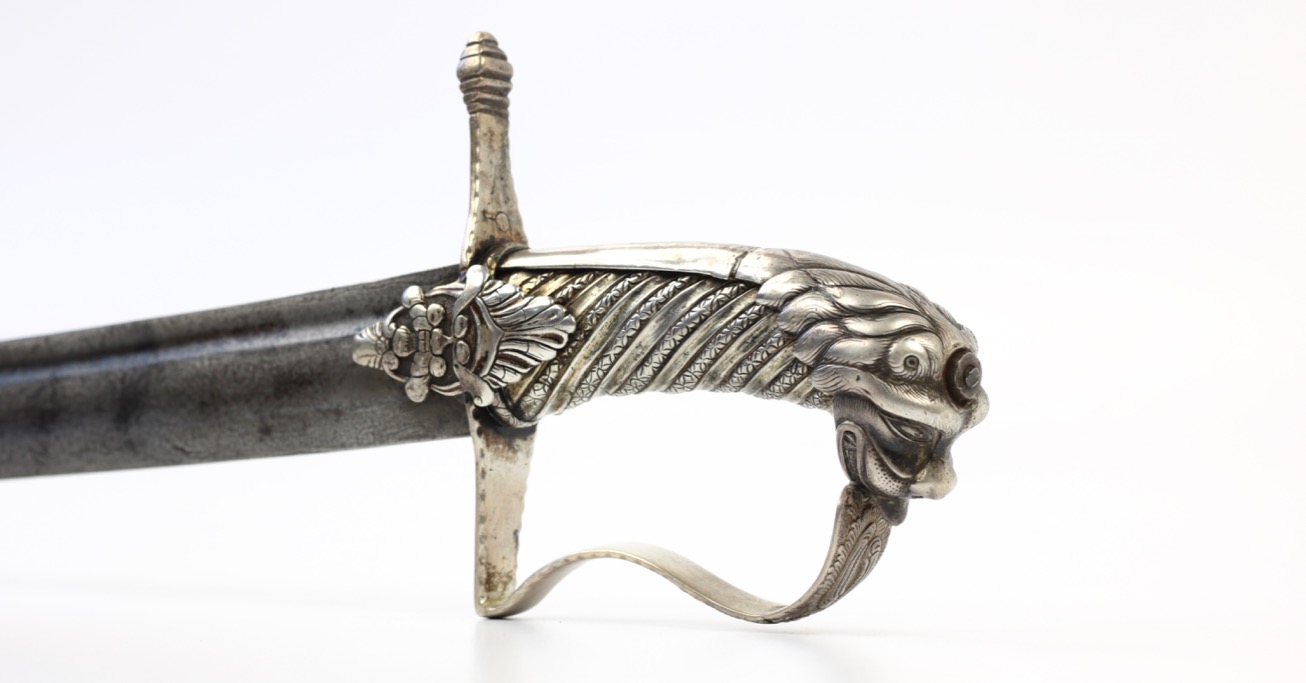
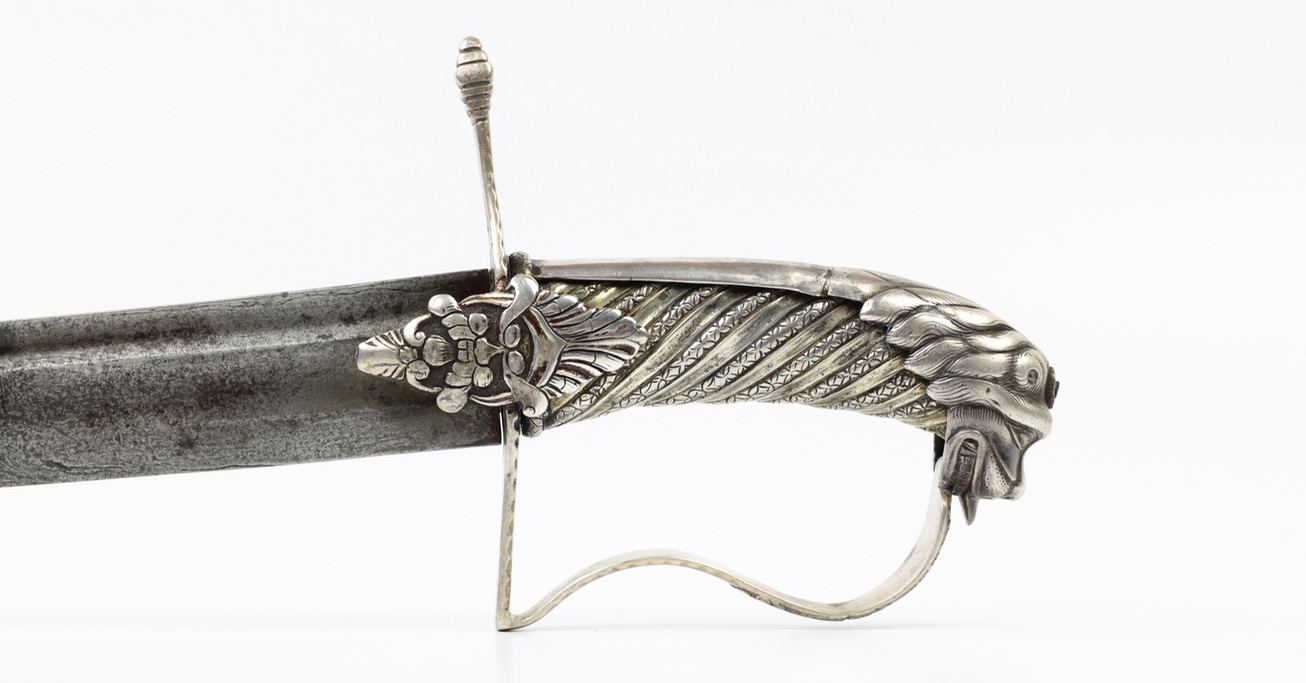
These mysterious weapons were already obsolete when the first ethnographers encountered them.
Its blade with very fine and complex pamor, brought out by a polish.
A standard pattern Qing military saber, but with the rare addition of a label in Manchu.

